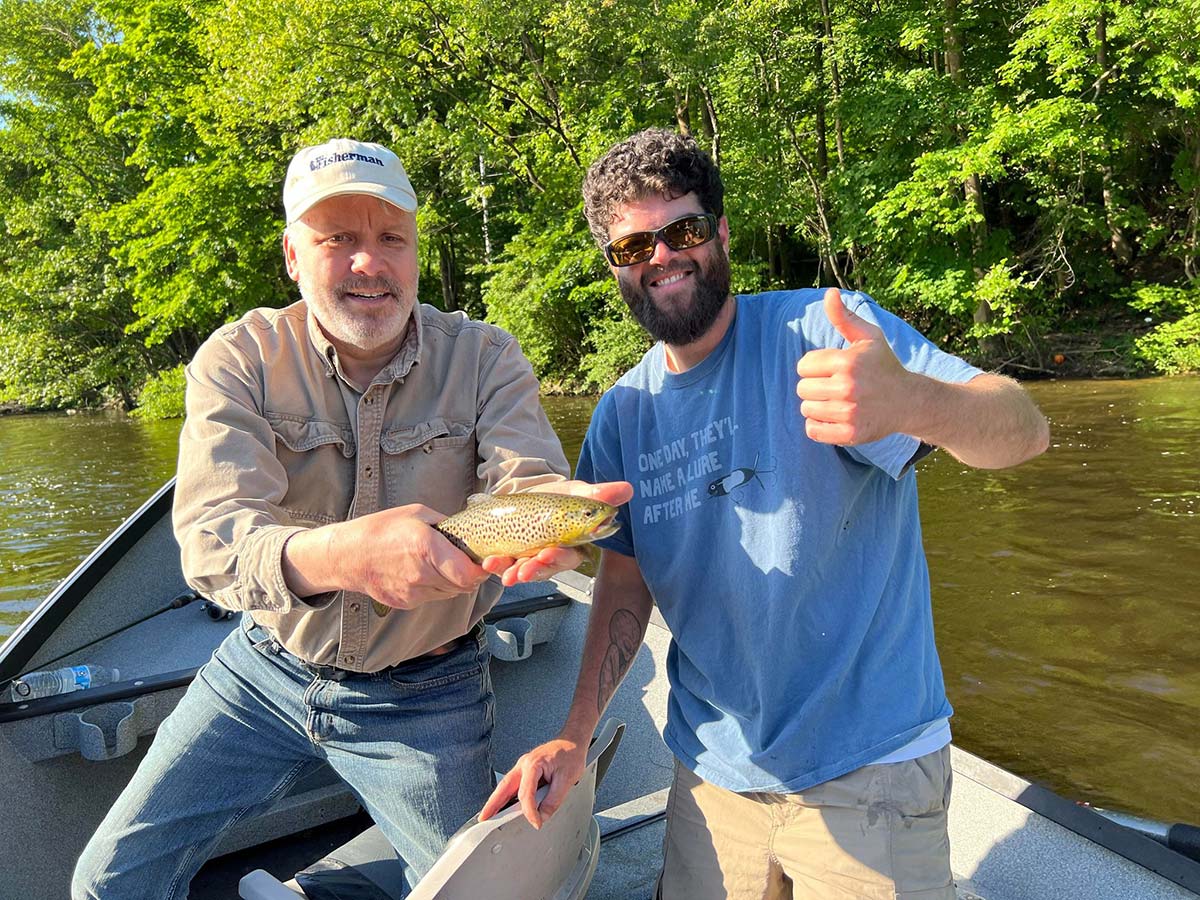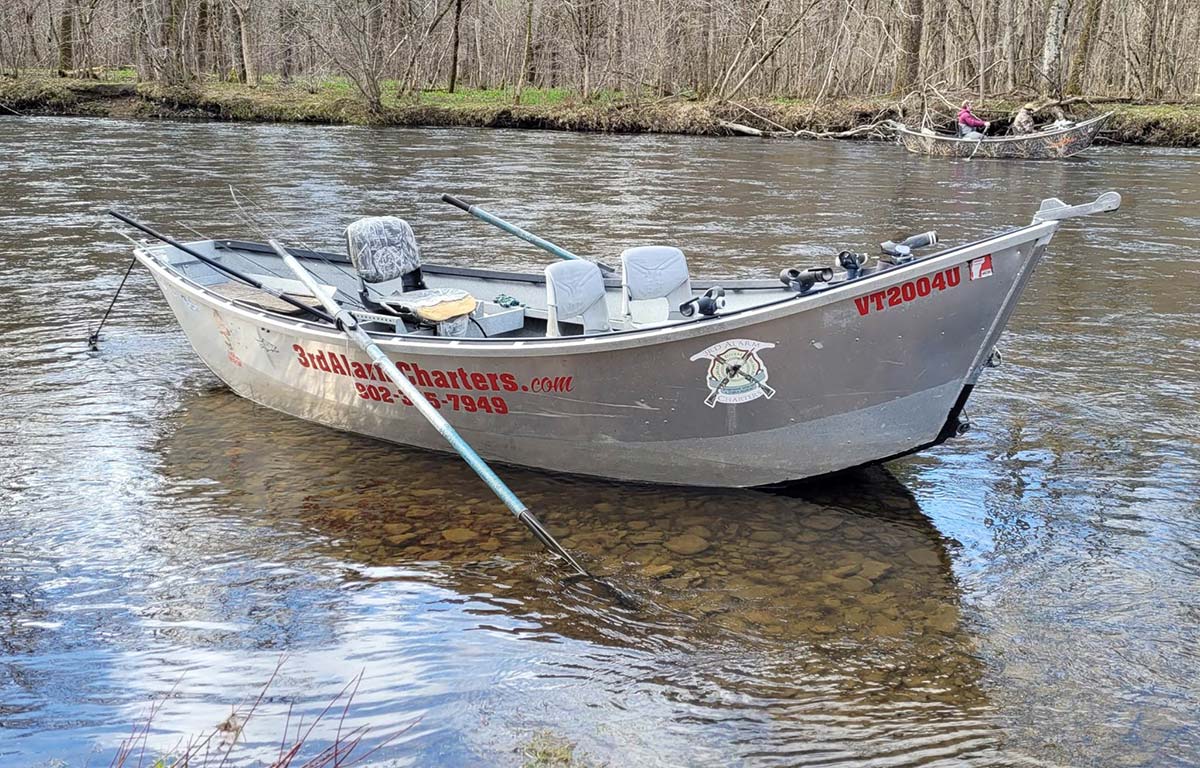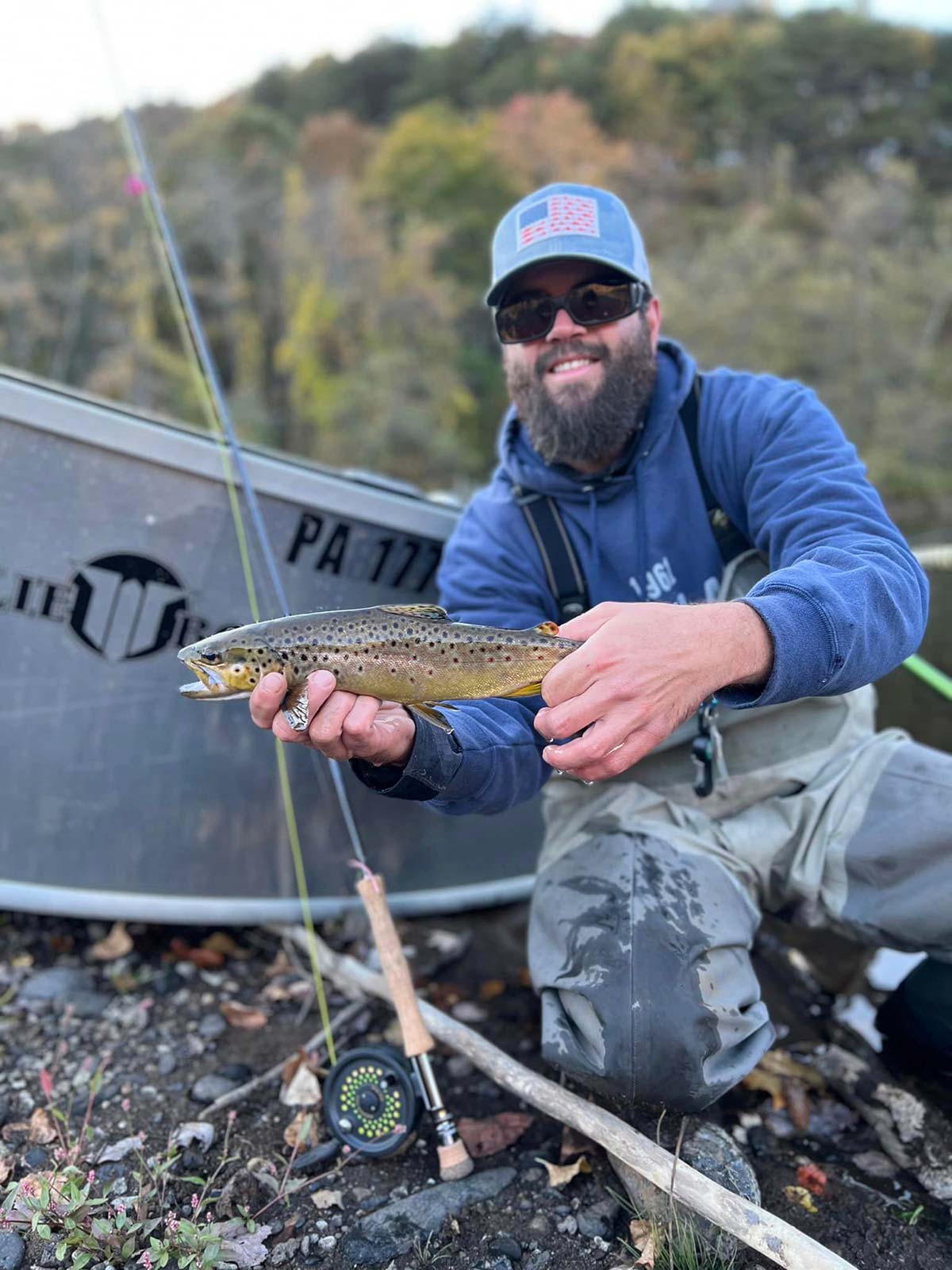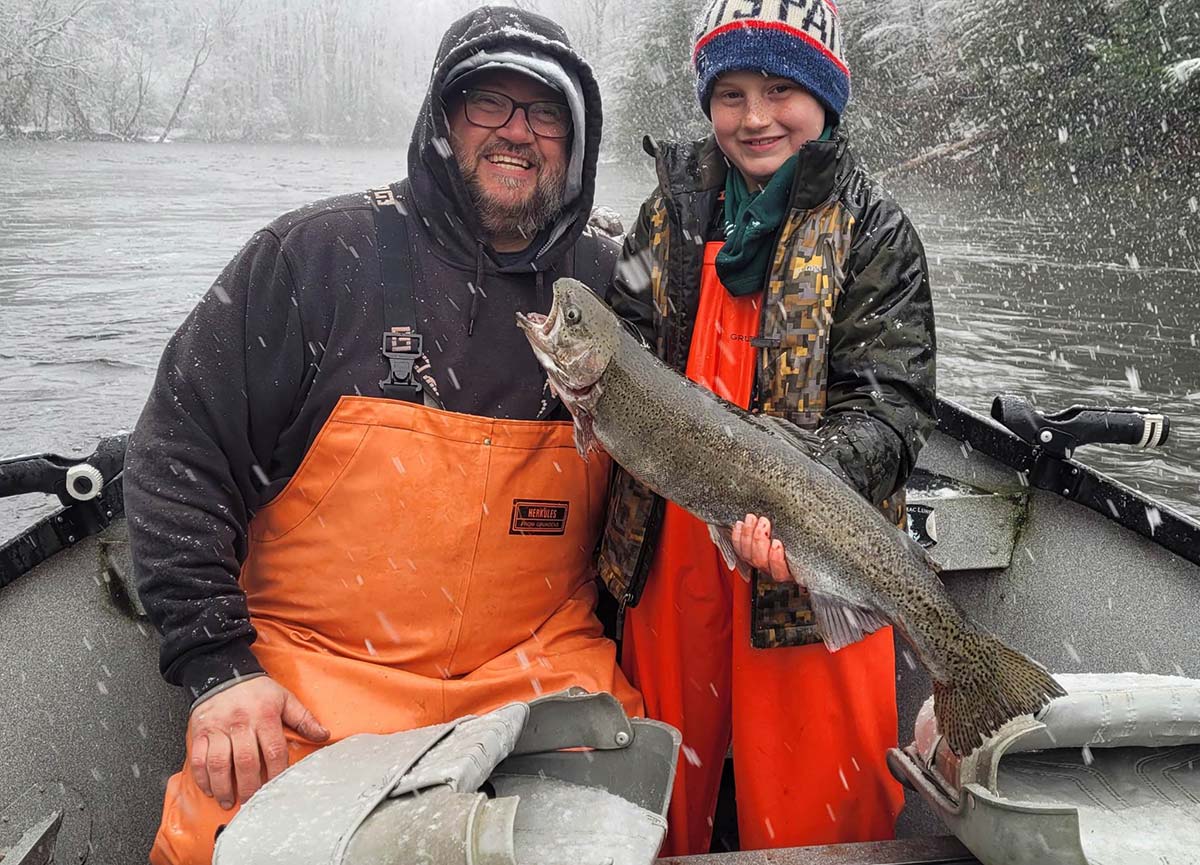
Too shallow to launch? Not with this uniquely designed craft!
Almost any angler can imagine himself splashing down a pristine mountain river on a drift boat, with your guide, steady at the oars, as you drift over to a hidden eddy. Suddenly you see a quick flash of silver near a downed tree, you make the perfect cast, and it’s fish on!
While this sounds like your typical day of fishing on the McKenzie or Deschutes rivers in the Pacific-Northwest, it is actually right here in the Northeast part of the country. While we do not often find the class of white water as those out west, many guides and anglers are looking to explore this style of fishing locally.
Let’s take a look at what is driving this new style here in the Northeast.

Catch My Drift
A drift boat is basically a funny looking rowboat, with what looks like an upswept bow at both ends. While the stern is a bit flattened, it has a unique shape specifically designed fish from fast moving water. Oregon native Ted Johnson (owner of DriftBoatPro.com) says the boat design has its origin on the McKenzie River, as it was also first known as the McKenzie River Drift Boat. These boats started to be built in 1935 by an angler named Tom Kaarhus, and they were like little tanks on the water, rugged and stable to fish the swift currents and boulder filled rapids in the area.
Today, many drift boats are made of welded aluminum or reinforced fiberglass. Surprisingly, hand-crafted wooden drift boats are still being made today, although today’s creations are more like works of art than the wooden boats made long ago.
So, why a drift boat? What makes them the ideal platform to guide and fish from? Until I recently found myself on a guided drift boat fishing trip, I was not sure either. However after a few hours, I fell in love with this style of fishing, for good reason.
Steve Kolnik, owner and guide of Gravy Boat Guide Service asked me to join him for a trip down the Lehigh River for some trout fishing. Sadly, I have lived right near the Lehigh River for almost 25 years and have never fished it; I always found it to be shallow, fast water with little or no accessibility with the exception of a few launch areas which are obviously way overfished. But just looking to wet a line, I jumped on the opportunity to join him. Within a few minutes of launching, I understood why this is method of fishing was so loved, (and pardon the pun), I was immediately hooked!
I noticed immediately how rugged Steve’s all aluminum “Willie” drift boat was put together. The high sides and lots of places to grab a handhold if needed gave a feeling of confidence to handle even the roughest of water. The boat easily floats like a cork, and we glided over only a few inches of water and never even heard a scrape on the bottom. This thing can go just about anywhere on the river and get you back safely. I also found the non-skid flooring to be helpful despite wet conditions. Working the river and getting fish onboard could have made things a bit slippery, but that too was thought of.
These boats are purpose-built, and aside from a rubber raft, there is nothing else like them made to handle fast moving water. Certainly nothing made as an ideal fishing platform could even come close.

Stability & Comfort
While they’re not the class five rapids you hear about in the Northwest, we do have a few spots of white water to challenge us depending on the current flow conditions. While summer months can be low and slow, the rains of the spring and fall can make for an interesting day on a river like the Lehigh. But this is where a drift boat shines, it’s at home in rough waters. As an angler I found myself easily able to stand and cast in almost any of the condition we faced on our trip. The bottom of the hull is basically flat, allowing for a smooth ride down river without any rocking side to side. The guide is able to maneuver the boat through the safest routes, keeping the boat always pointed in the right direction as you make your way downstream. The high sides of the boat also gave me a place to brace a knee to better keep balance and my focus on fishing.
Many drift boats are equipped with propane heaters in them allowing anglers to enjoy a trip in all seasons. Even mid-winter for feisty brown trout is made better by always having warm hands, something you would never have thought of in a 16-foot boat! Some also include a small built in “Pizza Oven” as it’s called, able to keep lunch warm until a mid-day break from fishing. So a guy could get pretty spoiled fishing year round with warm hands & feet and a hot lunch! What’s not to love with this style of fishing?
Aside from the safety and creature comforts of this style of boat, its main purpose is catch fish! One of the unique things I found during the trip was the symbiotic relationship between the guide and the fisherman. You must work together as a team to be successful. A good guide knows every rock, tree, eddy inflow on a piece of river that will most likely hold fish. His job is to get you into the best possible boat position to make that cast and get that trophy. “Cast to the left of that boulder,” or “Just right of that inflow” was the constant input from the guide that made it a true team effort.
| LESS PRESSURED WATER |

“Drift boats are a great tool to get clients into less pressured waters,” said Matt Trombley of 3rd Alarm Charters (lakechamplainfishingcharters.com), adding “There are many different options and designs, from aluminum, to fiberglass or inflatables they all have their place depending on the size of the stream, river or pond. We use ours guiding in New York & Vermont both on moving water such as the Salmon River as well as smaller lesser known lakes & ponds in Vermont.” |
“You can’t row when you’re fishing, and I can fish when I’m rowing,” Kolnik said, noting that it takes true teamwork to make a great day of fishing. It was amazing to me how with all that moving water, the guide’s able to stop the boat on a dime with his stern anchor as we pulled up to an ideal inflow. It gave me the opportunity to make several casts into an area we were pretty sure would hold some fish. And sure enough, being at the right spot and having time to present my lure in the right spot paid off with a nice brown trout in the boat.
Just as easily, a quick reposition of the oars moved us to the other side of the river allowed me to make a few casts to a large tree limb overhanging the water; fish on yet again, this time with a nice Lehigh River smallmouth. Being able to get you on the right spot with minimal effort is a huge benefit to this style of fishing, and one your guide can do almost effortlessly.
I had originally feared that with about a 6- to 7-mile float ahead of us, Kolnik might get exhausted after rowing such a distance. But as he explained it to me, you are not really rowing yourself downstream, you are using the oars to keep position and let the river take you on your way. You can back row, slow the boat through a given area, or position yourself to fish that perfect spot. While it does take a bit of work, it is not exhausting. In fact, after our trip Kolnik asked if we wanted to run back up river and go again!
I will certainly be on the Lehigh again for a drift boat trip to be sure. It was an awesome and rather eye-opening experience, that took me from looking a boring river I never fished, to finding a hidden gem that can only be accessed and enjoyed at this level by a fishing style that all started over 3,000 miles away.
Find George Schauer (aka, the Pocono Outdoors Guy) in our weekly video updates for the New Jersey, Delaware Bay edition of The Fisherman exclusively on our YouTube channel and at TheFisherman.com.




